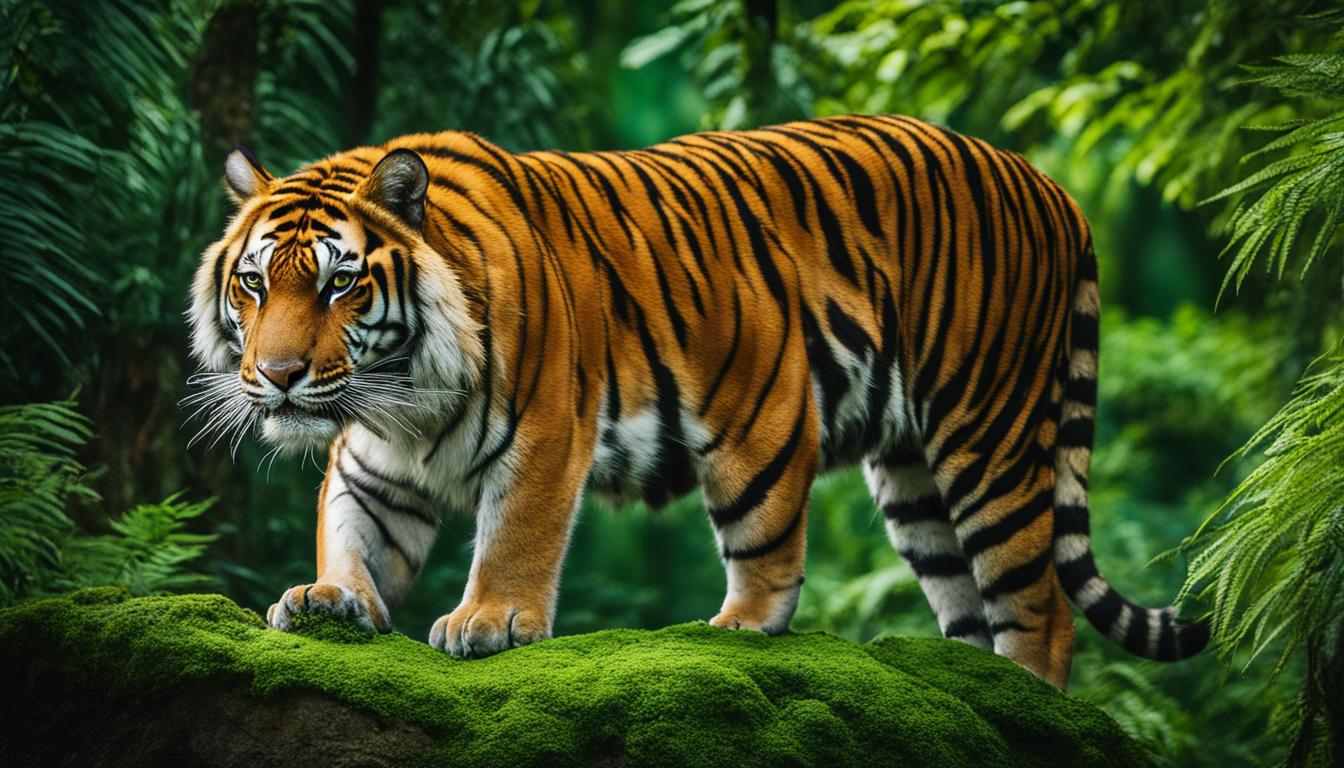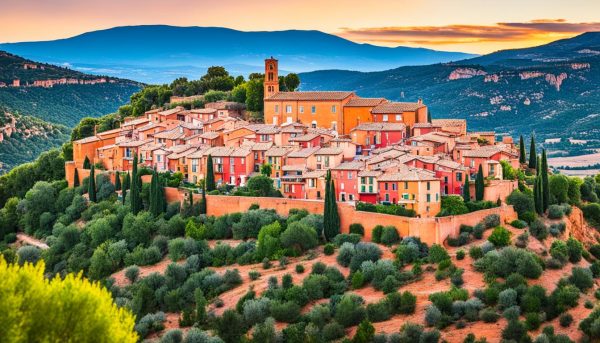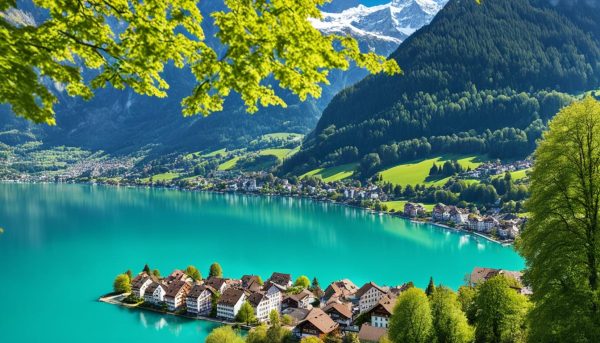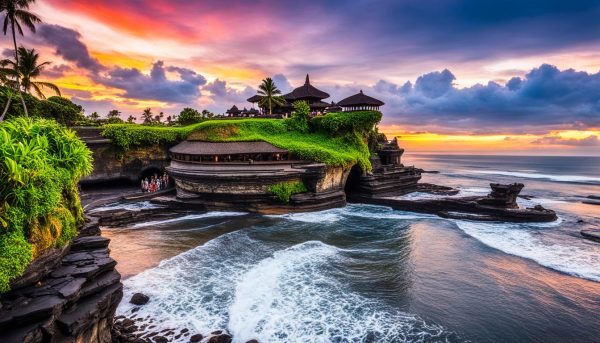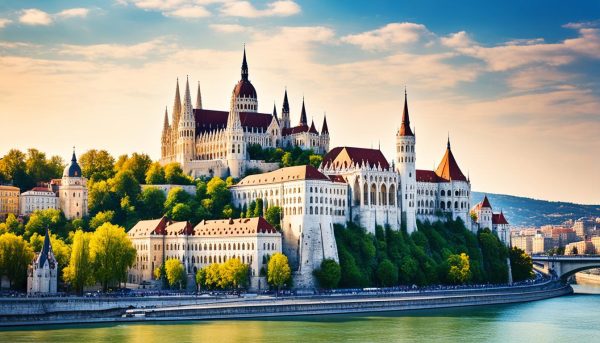Do you have a passion for wildlife and a knack for photography? Combining these two interests can lead to an incredibly rewarding experience – capturing the beauty and wonder of nature through your camera lens.
But wildlife photography can be challenging, requiring patience, persistence, and an understanding of animal behavior and camera techniques. In this article, we will explore the secrets and tips of successful wildlife photography, from understanding animal behavior to mastering camera settings, composition, and lighting, to ethical considerations and post-processing techniques.
With these secrets and techniques, you can take your wildlife photography to the next level and capture stunning images of the natural world.
Key Takeaways
- Wildlife photography is an exciting and rewarding pursuit that requires patience, persistence, and an understanding of animal behavior and camera techniques.
- Observing wildlife behavior and natural moments can help you capture more impactful and captivating images.
- The right gear and equipment, such as essential camera gear and lenses, are crucial for successful wildlife photography.
- Mastering camera settings, including exposure, shutter speed, aperture, and ISO, can help you capture wildlife images with precision and artistic flair.
- Composition, lighting, and post-processing techniques can enhance the impact and mood of your wildlife images, while ethical considerations and responsible photography practices are essential.
Understanding Wildlife Behavior
Observing wildlife behavior is a critical aspect of successful wildlife photography. The ability to capture natural moments through your camera lens will depend on your understanding of animal behavior and their natural habitat. Here we will go through some tips and tricks to help you get closer to your subjects and take stunning shots of wildlife.
Patience is Key
Patience is a virtue that every wildlife photographer must possess. You must be willing to wait for hours or even days to capture the perfect shot. Animals are not predictable, and you never know when they may appear. So it is essential to be patient and wait for the right moment.
Don’t Disturb the Wildlife
It is crucial to respect the natural habitat of the animals and not disturb them while photographing. Avoid getting too close to the animals or making sudden movements that may startle them. Also, make sure not to disrupt their natural behavior, as this could put them in danger.
Observe and Learn
Observe the animals quietly and learn about their behavior. This will help you anticipate their movements and capture the perfect shot. Take note of their feeding habits, their interactions with other animals, and their movements through their habitat.
Be Prepared for the Moment
Once you have studied their behavior, you must be prepared for the moment. Have your camera settings ready, make sure your camera is in silent mode, and be ready to capture the perfect shot. Use your knowledge of animal behavior to anticipate the perfect moment and be prepared to capture it.
Observing wildlife behavior is an essential part of wildlife photography. With patience, respect for their natural habitat, and a willingness to observe and learn, you can capture stunning, natural shots of wildlife in their element.
Gear and Equipment for Wildlife Photography
When it comes to wildlife photography, having the right gear and equipment is crucial for capturing those stunning images of nature. Let’s take a look at some of the essential camera equipment and wildlife photography gear that can enhance your photography experience and help you capture those perfect shots.
Camera Body
One of the most critical pieces of equipment for wildlife photography is the camera body. It’s essential to choose a camera that can handle the challenges of outdoor photography, such as dust, weather, and extreme temperatures. A camera with fast autofocus and high burst rates is ideal for capturing fast-moving wildlife. Professional cameras like Canon EOS-1D X Mark III or Nikon D6, or high-end mirrorless cameras like Sony A9 Mark II, are favorite choices among wildlife photographers.
Lenses
Choosing the right lens is critical for getting the perfect shot in wildlife photography. Long telephoto lenses are ideal for capturing distant wildlife, while wide-angle lenses can help you capture landscapes and contextual images. A telephoto zoom lens, such as the Canon EF 100-400mm f/4.5-5.6L IS II USM or the Nikon AF-S Nikkor 80-400mm f/4.5-5.6G ED VR, is a versatile option that can help you capture a variety of wildlife images. For bird photography, a prime lens like the Sony FE 400mm f/2.8 GM OSS can be an ideal choice.
It’s worth mentioning that some of these lenses can be quite expensive. However, many wildlife photographers opt for renting gear at a fraction of the cost. Renting also allows you to choose the best lens for the particular wildlife photography trip, without the burden of buying and carrying heavy and pricey lenses.
Tripods and Monopods
Tripods and monopods are essential for stabilizing your camera and achieving sharp images with slower shutter speeds. A sturdy tripod or monopod is ideal for wildlife photography, where you need to hold the camera steady for long periods. Look for lightweight and compact options that are easy to transport, such as the Gitzo GT2545T Series 2 Traveler Carbon Fiber Tripod.
Accessories
Accessories like filters, flashes, and remote shutters can enhance your wildlife photography experience. A polarizing filter can reduce glare and enhance colors, while a neutral density filter can help you use a slower shutter speed for creative effects. A flash can help you capture images in low light conditions, and a remote shutter can help you avoid camera shake while capturing images.
Whether you’re a professional wildlife photographer or an enthusiastic beginner, having the right gear and equipment can make all the difference in capturing stunning images of nature. Remember, investing in high-quality gear can save you time, effort and help you create images that you’ll cherish for a lifetime.
Mastering Camera Settings for Wildlife Photography
When it comes to wildlife photography, understanding and mastering camera settings is essential to capture stunning images with precision and artistic flair. Let’s explore the key camera settings that every wildlife photographer should know.
Exposure
Exposure is the amount of light that enters the camera when you take a photo. It’s measured in stops, with each stop representing a doubling or halving of the amount of light. Finding the right exposure can be tricky, especially in situations with fast-moving wildlife or challenging lighting conditions. To get the perfect exposure, you can adjust the aperture, shutter speed, or ISO, or a combination of all three.
Shutter Speed
Shutter speed refers to the length of time the camera’s shutter remains open to capture an image. It’s measured in fractions of a second, with faster shutter speeds capturing more detail of a moving subject. For wildlife photography, a fast shutter speed is necessary to capture animals in motion and avoid blurry images.
Aperture
Aperture controls the amount of light that enters the camera by adjusting the size of the lens’ opening. A smaller aperture (higher f-stop number) reduces the amount of light, while a larger aperture (lower f-stop number) lets more light in. Wildlife photographers often use a large aperture to create a shallow depth of field, blurring out the background and emphasizing the subject.
ISO
ISO measures the camera’s sensitivity to light. A higher ISO allows for faster shutter speeds or smaller apertures, but can result in additional noise or grain in the image. For wildlife photography, it’s best to keep the ISO as low as possible to ensure the highest quality image.
Mastering camera settings can take time and practice, but once you have a good understanding of exposure, shutter speed, aperture, and ISO, you’ll be well on your way to capturing stunning wildlife images.
Composition and Framing for Wildlife Photography
Composition is a critical element in wildlife photography. A well-composed photograph can grab the viewer’s attention and evoke emotion. The composition of wildlife photographs involves the arrangement of the elements within the frame. Here, we will explore some composition techniques that can make your wildlife photographs stand out.
Rule of Thirds
The Rule of Thirds is a basic composition technique that divides an image into thirds, both horizontally and vertically. The points of intersection of these lines are where the subject should be placed. This technique produces a more balanced and visually appealing image. In the example below, the bird’s eye is placed on the intersection of the lines, creating a well-composed image.
Leading Lines
Leading lines are lines within the photograph that guide the viewer’s eye towards the subject. These can be natural lines, such as a winding river, or man-made lines, such as a fence or a road. Leading lines add depth and dimension to the photograph and draw the viewer into the scene.
In the example below, the elephant’s trunk serves as a leading line, guiding the viewer’s eye to the subject. The line adds depth to the image and makes it more visually appealing.
Framing Subjects
Framing subjects involves using elements in the environment to create a frame around the subject. This technique draws the viewer’s eye to the subject and adds interest to the photograph. The frame can be created using natural elements such as branches or leaves, or man-made structures such as windows or doorways.
In the example below, the lion is framed by the branches of a tree. The frame not only draws the viewer’s attention to the subject but also creates a sense of tension and drama in the image.
Using these techniques, you can make your wildlife photographs more visually appealing and engaging. Remember to experiment with composition and framing to create unique and captivating images.
Lighting in Wildlife Photography
Lighting is a critical factor in capturing stunning and impactful wildlife images. Understanding the different types of lighting and how to use them can help you create images that convey mood, emotions, and the beauty of nature. In this section, we will explore the significance of natural light, the magic of golden hour, the drama of backlighting, and the potential of artificial lighting for wildlife photography.
The Importance of Natural Light
Natural light is the most common and accessible light source for wildlife photography. The color, intensity, and direction of natural light can dramatically impact the mood and feel of your images. To make the most of natural light, it is essential to shoot during the golden hours of sunrise and sunset when the light is soft, warm, and creates a stunning golden glow. Shooting at midday when the light is harsh and overhead may lead to blown-out highlights, deep shadows, and unflattering images.
The Magic of Golden Hour
Golden hour is the period shortly after sunrise or just before sunset when the light is diffused, and the colors are rich and warm. During this time, the natural light is directional and creates a dramatic contrast between light and shadow, enhancing the texture, and adding depth to your images. Shooting during the golden hour can create stunning images with an ethereal and magical quality.
The Drama of Backlighting
Backlighting occurs when the light source is behind the subject, creating a dramatic halo effect around the subject and adding a sense of depth and dimension to your images. Shooting into the light source can be challenging, but it can create some of the most striking images in wildlife photography. Backlighting is particularly effective in capturing the sheer majesty of large animals such as elephants, giraffes, and lions.
The Potential of Artificial Lighting
Artificial lighting allows photographers to create and control light in ways that natural light cannot. Flash, strobe, and other lighting equipment can be used to fill in shadows, add a catchlight, or create a dramatic effect. Artificial lighting can be particularly useful in low-light conditions when natural light is inadequate. However, it is essential to use artificial lighting responsibly and not to disturb or harm the wildlife subjects.
Whether you are shooting in natural light or using artificial lighting, it is crucial to be aware of the impact of light on your images. With patience and practice, you can learn to use different types of lighting to create stunning and impactful wildlife photographs.
Patience and Persistence in Wildlife Photography
Wildlife photography can be equally rewarding and challenging. Capturing the perfect shot requires not only skill and expertise but also a lot of patience and persistence. In this section, we will discuss some of the challenges that you might face as a wildlife photographer and provide tips on how to overcome them.
Wildlife photography challenges
The challenges of wildlife photography are numerous. A wildlife photographer must be prepared to face extreme weather conditions, difficult terrains, and unexpected situations. Wildlife subjects can be elusive and fast-moving, making it difficult to capture the perfect shot. Additionally, as wildlife photographers, we have a responsibility to respect and protect the subjects we photograph, which can sometimes mean waiting for hours or even days to capture the perfect shot.
Waiting for the perfect shot
Patience is key when it comes to wildlife photography. Waiting for the perfect shot can be frustrating, but it’s essential to be patient and persistent. Take the time to observe your wildlife subjects and learn their behavior. This will give you an advantage when it comes to capturing natural and compelling moments. Don’t be afraid to wait for the perfect shot, but also don’t be afraid to move on if it’s not happening. Remember, wildlife photography is all about capturing natural, authentic moments.
Perseverance
Perseverance is the key to successful wildlife photography. Don’t give up if you don’t capture the perfect shot on the first try. Experiment with different camera settings, angles, and compositions until you find what works best for you. It’s also essential to keep learning and improving your skills. Attend workshops, read books and blogs, and learn from other photographers. With perseverance, you can overcome any challenge and capture stunning wildlife images.
“Wildlife photography is a game of patience and perseverance. The more time you spend observing and waiting, the better your chances of capturing the perfect shot.”
Ethical Guidelines of Wildlife Photography
As wildlife photographers, we have a responsibility to respect and protect the subjects we photograph. Besides, responsible photography practices can also help to promote wildlife conservation efforts. Here are some ethical guidelines for wildlife photography that you should follow:
- Do not disturb or disrupt the natural behavior of the animals.
- Maintain a safe distance between yourself and the animals, and do not provoke them or get too close.
- Do not use bait or lures to attract animals.
- Avoid overcrowding or blocking the paths of animals, and respect their habitats.
- Do not alter or manipulate the environment or animals in any way for the sake of a photograph.
- Educate yourself about the species you are photographing and their conservation status.
- Obtain proper permits and follow all rules and regulations for photographing wildlife in protected areas.
By following these guidelines, we can help to preserve and protect the natural world while still enjoying the beauty and majesty of wildlife through photography.
Respecting Wildlife
Above all, wildlife photographers should have a deep respect and appreciation for the animals they photograph. This means treating them with the same care and consideration that we would give to any living being, and recognizing their intrinsic value and importance in the ecosystem.
By approaching wildlife photography with a mindful and respectful attitude, we can create images that not only capture the beauty of the natural world but also help to inspire others to protect and preserve it for generations to come.
Tips for Wildlife Photography in Challenging Environments
Wildlife photography can take you to some of the most challenging environments on the planet. Whether you’re battling extreme temperatures in the Arctic or trekking through the thick jungles of the Amazon, capturing stunning wildlife images in these remote locations requires careful planning and preparation. Here are some tips to help you succeed:
Research Your Destination
Before embarking on your journey, research the location thoroughly. Learn about the climate, terrain, and wildlife you are likely to encounter. This knowledge will help you choose the right gear and equipment, as well as prepare you for any potential challenges you may face.
Pack the Right Gear
When it comes to wildlife photography in challenging environments, having the right gear is crucial. Make sure to bring weather-resistant camera gear, such as waterproof bags and covers, and durable camera bodies and lenses. Additionally, consider investing in a portable power supply, as you may not have access to electricity in remote locations.
Dress Appropriately
Dressing for the elements is key to staying comfortable and focused during your wildlife photography expeditions. Wear appropriate clothing that can withstand extreme temperatures and protect you from the elements, such as moisture-wicking layers, waterproof jackets, and insulated boots.
Be Patient
Wildlife photography in challenging environments requires patience and persistence. Be prepared to spend long hours waiting for the perfect shot, and don’t be discouraged if you don’t get it right away. Remember, capturing stunning wildlife images takes time and effort.
Stay Safe
Safety should always be your top priority when it comes to wildlife photography. Be aware of your surroundings and any potential hazards, such as slippery rocks or dangerous animals. Additionally, make sure you have the necessary permits and permissions to photograph wildlife in the area, and always respect the animals and their habitats.
With these tips in mind, you’ll be well-equipped to tackle wildlife photography in even the most challenging environments. Remember to stay patient, stay safe, and most importantly, have fun!
Post-Processing Techniques for Wildlife Photography
In wildlife photography, post-processing is a crucial step that allows you to enhance your images and bring out the natural beauty of your subjects while preserving their authenticity. Here are some tips and techniques for effective post-processing:
- Start with the basics: Begin by adjusting the exposure, contrast, and white balance of your image to achieve a well-balanced look.
- Focus on details: Use sharpening and noise reduction tools to bring out the fine details in your image while reducing unwanted noise and grain.
- Enhance colors: Adjust the saturation and vibrance of your image to make the colors pop without making them look artificial.
- Crop and straighten: Use cropping and straightening tools to improve the composition of your image and to eliminate any distractions from the background.
- Experiment with creative effects: Use artistic effects and filters to give your images a unique and creative look, but be careful not to overdo it.
Remember to always maintain the natural look and feel of your wildlife images, and avoid making them look too heavily edited or processed. Here are some additional tips to help you preserve the authenticity of your wildlife photographs:
- Avoid over-sharpening: Applying too much sharpening can make your image look artificial and unrealistic. Use sharpening tools sparingly and only if necessary.
- Use a light hand: When adjusting the exposure, contrast, or saturation, use a light touch and make small tweaks to achieve a subtle and natural effect.
- Don’t alter the subject: Avoid making any changes to your subject or its surroundings that could alter its natural appearance or behavior.
With these post-processing techniques and tips, you can enhance your wildlife images and create stunning visuals that capture the beauty of nature. Remember to always prioritize authenticity and naturalness in your wildlife photography, and you’ll be sure to produce images that stand the test of time.
Storytelling through Wildlife Photography
Wildlife photography captures the essence of nature’s beauty and wildlife in their natural habitat. But more than that, it can be a powerful medium for visual storytelling.
Capturing emotions and conveying narratives through your wildlife images is essential if you want to connect with your audience and create compelling visual stories.
To achieve this, you must understand the behavior of the animals you photograph, their environment, and the story you want to tell. Use your camera as a tool to capture not just the scene but also the emotions and messages you want to convey.
In wildlife photography, the art of storytelling is not just through a single image. Instead, it is about curating a series of images that tell a story. This could be a story of a specific animal, a particular species, or even the environment in which they live.
To help achieve your storytelling goals, you must pay attention to the composition of your images. The rule of thirds, leading lines, and framing your subject can help add context and meaning to your images.
Furthermore, it is essential to capture the animal’s behavior or unique traits to provide an insight into their world. Use the animal’s body language, expressions, and surroundings to create an emotional connection between the viewer and the subject.
Lastly, post-processing can also play a significant role in visual storytelling. A simple adjustment of the brightness, contrast, or saturation can affect the mood and impact of your images.
Remember, each image tells a story. Your job as a wildlife photographer is to craft a compelling narrative through your photographs.
“In the end, we conserve only what we love, we will love only what we understand, and we will understand what we are taught.” – Baba Dioum
Conclusion
In conclusion, wildlife photography is a fascinating and rewarding pursuit that requires patience, persistence, and a deep respect for nature. By applying the secrets and techniques detailed in this article, you can capture stunning images that showcase the wonders of the natural world.
Remember to observe and understand wildlife behavior, select the right gear and equipment, master camera settings, compose and frame your shots with care, and use lighting to your advantage. Always prioritize ethical considerations, and be prepared to face the challenges of harsh environments and remote locations.
Post-processing techniques can further enhance your images, while visual storytelling can help convey your emotions and create compelling narratives. By following these tips and techniques, you can become a skilled and responsible wildlife photographer.
So go out there and start capturing the beauty of nature through your lens. Happy snapping!
FAQ
What is wildlife photography?
Wildlife photography is a genre of photography that focuses on capturing images of animals and their natural habitats.
What are some tips for wildlife photography?
Some tips for wildlife photography include practicing patience, studying animal behavior, using the right camera equipment, and mastering camera settings.
What gear do I need for wildlife photography?
Essential gear for wildlife photography includes a DSLR or mirrorless camera, telephoto or zoom lens, tripod, and accessories such as a remote shutter release and lens filters.
How do I adjust camera settings for wildlife photography?
Adjusting camera settings for wildlife photography involves setting the right exposure, choosing appropriate shutter speed and aperture, and adjusting ISO sensitivity based on the lighting conditions.
What composition techniques can I use in wildlife photography?
Composition techniques such as the rule of thirds, leading lines, and framing can be used to create visually appealing and impactful wildlife images.
How important is lighting in wildlife photography?
Lighting is crucial in wildlife photography as it can enhance the mood and impact of your images. Natural light, golden hour, backlighting, and artificial lighting can all play a role in creating stunning wildlife photographs.
What challenges are involved in wildlife photography?
Wildlife photography presents challenges such as unpredictable animal behavior, waiting for the perfect shot, and working in challenging environments with harsh conditions and remote locations.
How can I practice ethical wildlife photography?
Ethical wildlife photography involves respecting wildlife and their habitats, practicing responsible photography, and supporting wildlife conservation efforts.
What post-processing techniques can I use for wildlife photography?
Post-processing techniques for wildlife photography include adjusting exposure, color correction, sharpening, and enhancing details while preserving the natural look and feel of the image.
How can I tell a story through my wildlife photographs?
To tell a story through wildlife photography, focus on capturing emotions, conveying narratives, and capturing the natural behavior and interactions of the animals.

